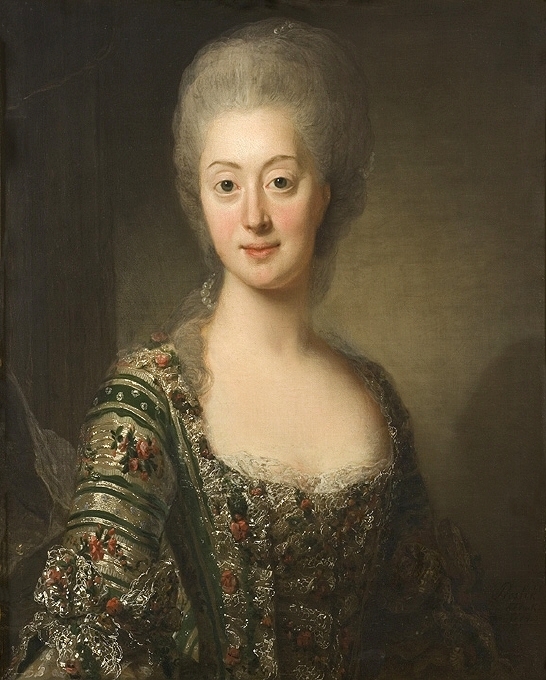|
Svea Court Of Appeal
Svea Court of Appeal ( sv, Svea hovrätt), located in Stockholm, is one of six appellate courts in the Swedish legal system. It is located in the Wrangel Palace, on Riddarholmen islet in Gamla Stan, the old town of Stockholm. History The Svea Court of Appeal was founded in 1614 and was the highest court in Sweden until 1789, when the Supreme Court of Sweden was established. Among people sentenced to death by the court was Nicolaus Olai Campanius Nicolaus Olai Campanius (1593–1624), also known as Nolandus, was a Swedish Catholic convert and Rector of a school in Enköping. He was born in 1593 in Gävle to a family of a sexton, hence his Latin name. After several years of study at the ..., convicted of being a Catholic, and Jacob Johan Anckarström, convicted of the assassination of Gustaf III of Sweden. Buildings The Svea Court of Appeal is located in several buildings on Riddarholmen. Apart from the Wrangel Palace, which is the main building, it also has divisions i ... [...More Info...] [...Related Items...] OR: [Wikipedia] [Google] [Baidu] |
Sweden
Sweden, ; fi, Ruotsi; fit, Ruotti; se, Ruoŧŧa; smj, Svierik; sje, Sverji; sju, Sverje; sma, Sveerje or ; yi, שוועדן, Shvedn; rmu, Svedikko; rmf, Sveittiko. formally the Kingdom of Sweden, is a Nordic countries, Nordic country located on the Scandinavian Peninsula in Northern Europe. It borders Norway to the west and north, and Finland to the east. At , Sweden is the largest Nordic country and the List of European countries by area, fifth-largest country in Europe. The Capital city, capital and largest city is Stockholm. Sweden has a population of 10.5 million, and a low population density of ; around 87% of Swedes reside in urban areas in the central and southern half of the country. Sweden’s urban areas together cover 1.5% of its land area. Because the country is so long, ranging from 55th parallel north, 55°N to 69th parallel north, 69°N, the climate of Sweden is diverse. Sweden has been inhabited since Prehistoric Sweden, prehistoric times, . T ... [...More Info...] [...Related Items...] OR: [Wikipedia] [Google] [Baidu] |
Jacob Johan Anckarström
Jacob Johan Anckarström (11 May 1762 – 27 April 1792) was a Swedish military officer who is known as the assassin of King Gustav III of Sweden. He was convicted and executed for regicide. Life He was the son of Jacob Johan Anckarström the Elder and Hedvig Ulrika Drufva. He married Gustaviana Elisabet Löwen (1764-1844) in 1783, and had two daughters and two sons: Gustafva Eleonora Löwenström (1785-1860), Carolina Lovisa, Johan Jacob and Carl David. Anckarström served as a page at court and then as a captain in King Gustav III's regiment between 1778 and 1783. During travels to Gotland, he was accused of slandering the king and fled to Stockholm, where he spent the winter; he was subsequently arrested, brought back, and tried in Gotland. Although he was acquitted due to lack of evidence, he later maintained in his confession that this incident sparked his fire of hatred towards the king, fuelled by the contemporary revolutionary movement in Europe. The Swedish nobles we ... [...More Info...] [...Related Items...] OR: [Wikipedia] [Google] [Baidu] |
Government Buildings In Sweden
A government is the system or group of people governing an organized community, generally a state. In the case of its broad associative definition, government normally consists of legislature, executive, and judiciary. Government is a means by which organizational policies are enforced, as well as a mechanism for determining policy. In many countries, the government has a kind of constitution, a statement of its governing principles and philosophy. While all types of organizations have governance, the term ''government'' is often used more specifically to refer to the approximately 200 independent national governments and subsidiary organizations. The major types of political systems in the modern era are democracies, monarchies, and authoritarian and totalitarian regimes. Historically prevalent forms of government include monarchy, aristocracy, timocracy, oligarchy, democracy, theocracy, and tyranny. These forms are not always mutually exclusive, and mixed govern ... [...More Info...] [...Related Items...] OR: [Wikipedia] [Google] [Baidu] |
Appellate Courts
A court of appeals, also called a court of appeal, appellate court, appeal court, court of second instance or second instance court, is any court of law that is empowered to hear an appeal of a trial court or other lower tribunal. In much of the world, court systems are divided into at least three levels: the trial court, which initially hears cases and reviews evidence and testimony to determine the facts of the case; at least one intermediate appellate court; and a supreme court (or court of last resort) which primarily reviews the decisions of the intermediate courts, often on a discretionary basis. A particular court system's supreme court is its highest appellate court. Appellate courts nationwide can operate under varying rules. Under its standard of review, an appellate court decides the extent of the deference it would give to the lower court's decision, based on whether the appeal were one of fact or of law. In reviewing an issue of fact, an appellate court ordinar ... [...More Info...] [...Related Items...] OR: [Wikipedia] [Google] [Baidu] |
Courts In Sweden
A court is any person or institution, often as a government institution, with the authority to adjudicate legal disputes between parties and carry out the administration of justice in civil, criminal, and administrative matters in accordance with the rule of law. In both common law and civil law legal systems, courts are the central means for dispute resolution, and it is generally understood that all people have an ability to bring their claims before a court. Similarly, the rights of those accused of a crime include the right to present a defense before a court. The system of courts that interprets and applies the law is collectively known as the judiciary. The place where a court sits is known as a venue. The room where court proceedings occur is known as a courtroom, and the building as a courthouse; court facilities range from simple and very small facilities in rural communities to large complex facilities in urban communities. The practical authority given ... [...More Info...] [...Related Items...] OR: [Wikipedia] [Google] [Baidu] |
Stenbock Palace
The Stenbock family is an old Swedish noble family, of which one younger branch established itself in Finland and another younger branch in Estonia, both of them in the mid 18th century, of which the first was entered into the rolls of the Finnish House of Nobility and the latter received both Estonian and Russian letters of nobility. Notable members *Ebba Stenbock (15??–1614) *Catherine Stenbock (1535–1621) *Gustaf Otto Stenbock (1614–1685) *Magdalena Stenbock (1649–1727) *Hedvig Eleonora Stenbock (1658–1714) *Magnus Stenbock (1664–1717) *Eric Stenbock (1858–1895) Gallery File:COA_family_sv_Stenbock_(grevliga_ätten).svg, Arms of the Swedish counts Stenbock, the main branch of the family File:Stenbok-fermor 11-34.jpg, Arms of the Stenbock-Fermor branch of the family File:KatarinaStenbock.JPG, Catherine Stenbock File:Gustaf Otto Stenbock.jpg, Gustaf Otto Stenbock File:Magnus Stenbock, 1665-1717.jpg, Magnus Stenbock File:Eric Stenbock.jpg, Eric Stenbock File:Ridd ... [...More Info...] [...Related Items...] OR: [Wikipedia] [Google] [Baidu] |
Hessenstein Palace
Hessenstein is a mountain of Bavaria, Germany Germany, officially the Federal Republic of Germany (FRG),, is a country in Central Europe. It is the most populous member state of the European Union. Germany lies between the Baltic and North Sea to the north and the Alps to the sou .... The nearest town is Klingenbrunn, Germany. Mountains of Bavaria {{Bavaria-geo-stub ... [...More Info...] [...Related Items...] OR: [Wikipedia] [Google] [Baidu] |
Gustaf III Of Sweden
Gustav III (29 March 1792), also called ''Gustavus III'', was King of Sweden from 1771 until his assassination in 1792. He was the eldest son of Adolf Frederick of Sweden and Queen Louisa Ulrika of Prussia. Gustav was a vocal opponent of what he saw as the abuse of political privileges seized by the nobility since the death of King Charles XII. Seizing power from the government in a coup d'état, called the Swedish Revolution, in 1772 that ended the Age of Liberty, he initiated a campaign to restore a measure of Royal autocracy, which was completed by the Union and Security Act of 1789, which swept away most of the powers exercised by the Swedish Riksdag (parliament) during the Age of Liberty, but at the same time it opened up the government for all citizens, thereby breaking the privileges of the nobility. A bulwark of enlightened absolutism, Gustav spent considerable public funds on cultural ventures, which were controversial among his critics, as well as military attempts ... [...More Info...] [...Related Items...] OR: [Wikipedia] [Google] [Baidu] |
Nicolaus Olai Campanius
Nicolaus Olai Campanius (1593–1624), also known as Nolandus, was a Swedish Catholic convert and Rector of a school in Enköping. He was born in 1593 in Gävle to a family of a sexton, hence his Latin name. After several years of study at the University of Uppsala he set out on the Grand Tour of Europe, which was financed by three bourgeoisie of Gävle by 200 Swedish riks- tollars per annum for period of three years. First he entered University of Helmstedt. Later Campanius entered a special papal seminary ( la, Seminarium Pontificium) called in la, Collegium Nordicum at University of Olomouc in 1605. Companius complained that his Jesuit instructors in Olomouc were as eager to procure converts to their religion "as the Devil to pursue the soul". But despite this he really did enjoy his philosophy lectures because of the high standard and of proficiency with which the subject was taught. After completing study in Olomouc, Campanius entered Jesuit College in Braunsberg, howeve ... [...More Info...] [...Related Items...] OR: [Wikipedia] [Google] [Baidu] |
Stockholm
Stockholm () is the Capital city, capital and List of urban areas in Sweden by population, most populous city of Sweden as well as the List of urban areas in the Nordic countries, largest urban area in the Nordic countries. Approximately 1 million people live in the Stockholm Municipality, municipality, with 1.6 million in the Stockholm urban area, urban area, and 2.4 million in the Metropolitan Stockholm, metropolitan area. The city stretches across fourteen islands where Mälaren, Lake Mälaren flows into the Baltic Sea. Outside the city to the east, and along the coast, is the island chain of the Stockholm archipelago. The area has been settled since the Stone Age, in the 6th millennium BC, and was founded as a city in 1252 by Swedish statesman Birger Jarl. The city serves as the county seat of Stockholm County. Stockholm is the cultural, media, political, and economic centre of Sweden. The Stockholm region alone accounts for over a third of the country's Gross d ... [...More Info...] [...Related Items...] OR: [Wikipedia] [Google] [Baidu] |
Gamla Stan
Gamla stan (, "The Old Town"), until 1980 officially Staden mellan broarna ("The Town between the Bridges"), is the old town of Stockholm, Sweden. Gamla stan consists primarily of the island Stadsholmen. Officially, but not colloquially, Gamla stan includes the surrounding islets Riddarholmen, Helgeandsholmen and Strömsborg. It has a population of approximately 3,000. Notable buildings, located in the old town, include, among others, the Bonde Palace, Stockholm Palace, Stockholm Stock Exchange Building and Tessin Palace. Overview The town dates back to the 13th century, and consists of medieval alleyways, cobbled streets, and archaic architecture. North German architecture has had a strong influence in the Old Town's construction. Stortorget is the name of the scenic ''large square'' in the centre of Gamla Stan, which is surrounded by old merchants' houses including the Stockholm Stock Exchange Building. The square was the site of the Stockholm Bloodbath, where Swe ... [...More Info...] [...Related Items...] OR: [Wikipedia] [Google] [Baidu] |


.jpg)




